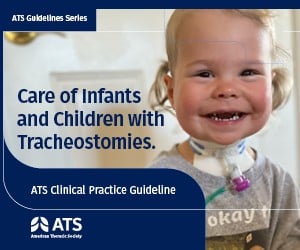Health
New Guidelines Aid Parents in Tracheostomy Decisions for Children

On October 22, 2025, the American Thoracic Society (ATS) released a new clinical practice guideline designed to assist clinicians and caregivers in making informed decisions regarding tracheostomy care for children. This guideline aims to address the emotional and logistical challenges faced by families when considering whether a tracheostomy is in the best interest of their child.
Guidelines Provide Clarity for Caregivers
A tracheostomy involves surgically placing a tube through an incision in the neck into the windpipe, allowing for easier breathing. While this procedure can be life-saving, it may not always be beneficial. “A tracheostomy can save a life, lengthen a life, and improve the quality of life. However, this is not always true,” stated Christopher Baker, MD, co-chair of the guideline and director of the Ventilator Care Program at Children’s Hospital Colorado. He emphasized the complexity of the decision-making process for family caregivers.
The newly published guidelines, featured in the American Journal of Respiratory and Critical Care Medicine, emerged from a collaboration between health professionals and family members of children with tracheostomies. Crystal Costante, a parent involved in the guideline development, expressed her appreciation for the emphasis on family inclusion, stating, “Clear and consistent guidance means that clinicians across different settings will have a shared understanding of what high quality, family-centered tracheostomy care looks like.”
Key Recommendations for Care Providers
Developed using the evidence-based GRADE framework, the guideline addresses six critical questions about tracheostomy management. Among the recommendations are:
- Recommendation 1: Apply ethical principles such as beneficence, nonmaleficence, autonomy, and justice to guide shared decision-making regarding tracheostomy placement.
- Recommendation 3: Always have an awake and alert trained caregiver present with children at risk of immediate complications related to tracheostomy.
- Recommendation 5b: Conduct a complete airway evaluation before attempting decannulation in children with tracheostomies, assessing various anatomical regions.
This marks the first time the ATS has published clinical practice guidelines specifically addressing pediatric tracheostomy care since issuing an official statement on the topic in 1999. Dr. Baker noted, “Although we brought together a diverse group of experts, we realize that some of our recommendations may be difficult to implement in settings with limited resources, such as rural areas or low and middle-income countries.”
As part of ongoing efforts, the ATS is planning a follow-up study to explore the applicability of these guidelines in various healthcare settings. Since 2016, the ATS has published over 30 clinical practice guidelines on various respiratory conditions, emphasizing its commitment to improving patient care.
-

 Business3 days ago
Business3 days agoInvestors Eye Potential $60,000 Gains with Ozak AI Token
-

 Politics5 days ago
Politics5 days agoFormer Pastor Arrested on Human Trafficking and Indecent Charges
-

 Lifestyle5 days ago
Lifestyle5 days agoNatty from KISS OF LIFE Stuns in Micro-Shorts at Seoul Event
-

 Business4 days ago
Business4 days agoQuotient Wealth Partners Adjusts Holdings in iShares Russell 1000 ETF
-

 Politics4 days ago
Politics4 days agoSkip Bayless Critiques Travis Hunter’s Game Day Baptism
-

 Entertainment5 days ago
Entertainment5 days agoUtah Residents Face Resource Shortages Amid Ongoing Government Shutdown
-

 Business5 days ago
Business5 days agoCalifornia to Ban All Plastic Bags in Grocery Stores by 2026
-

 Entertainment4 days ago
Entertainment4 days agoPete Davidson Surprises Pregnant Girlfriend with Private Jet to Concert
-

 Science5 days ago
Science5 days agoMIT Develops Groundbreaking 3D Brain Models for Personalized Therapies
-

 Science5 days ago
Science5 days agoCommunity Mourns Loss of Judith Ernst, Pioneer Educator at 81
-

 Politics5 days ago
Politics5 days agoIberia Parish Sees Surge in Marriage Licenses Issued in October
-

 Entertainment5 days ago
Entertainment5 days agoAce Frehley, KISS Guitarist, Passes Away at 74 After Fall









